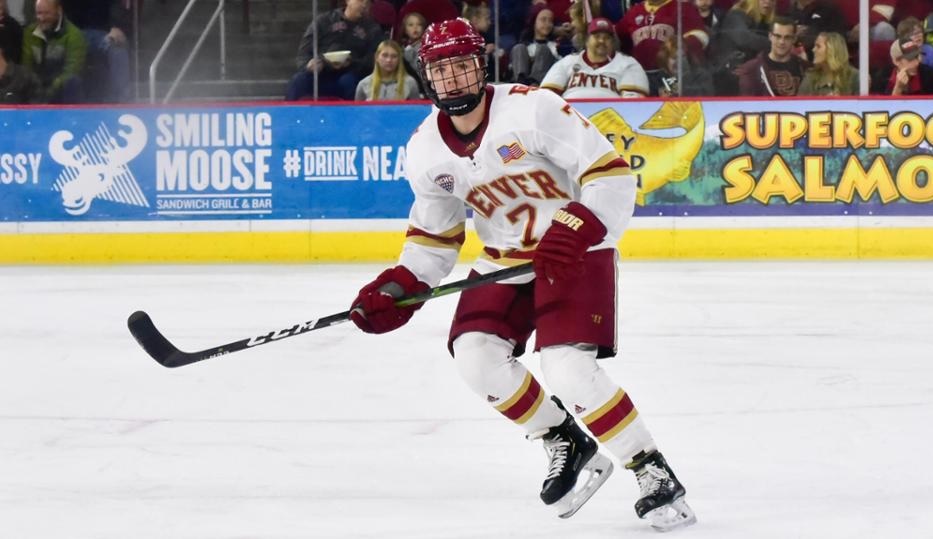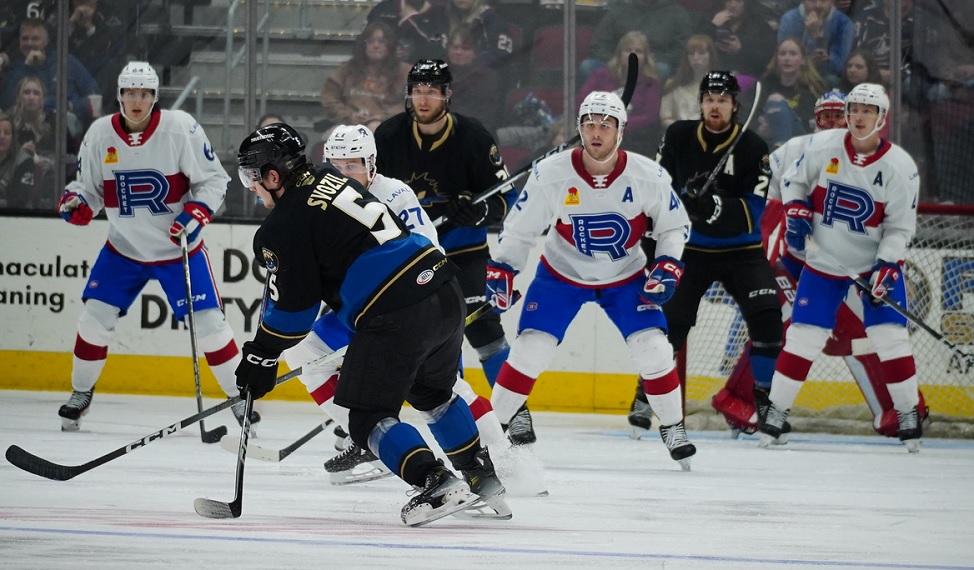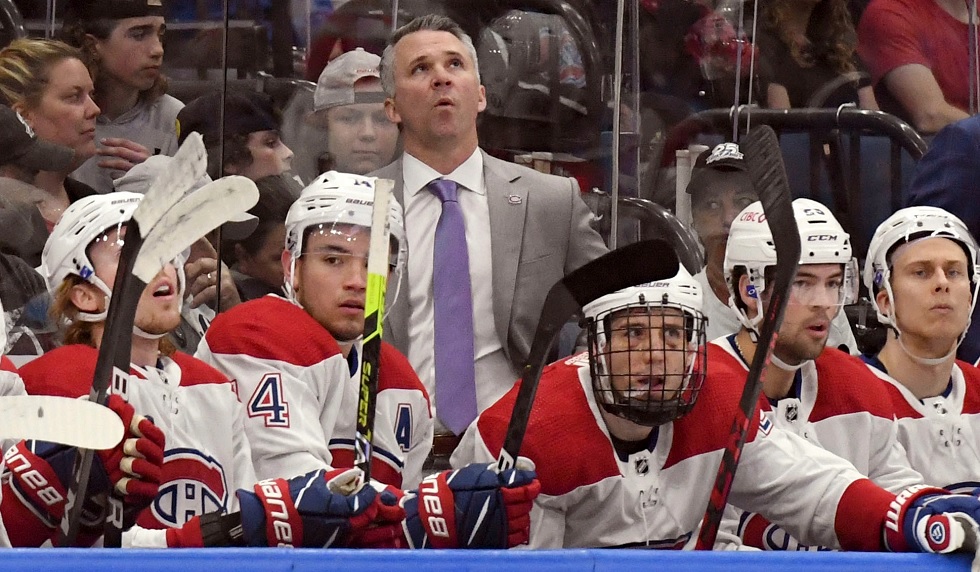HabsWorld.net --
We’ve now reached the top-20 in our annual Prospect Rankings series. This group of young players is highlighted by one of Montreal’s picks from 2020 who has done nothing but produce since being selected.
Overview
Here are the criteria that each player had to meet to be eligible to be in these rankings:
1) The player must be 24 years old or younger as of October 1, 2020
2) The player must have no greater than 50 games of NHL experience (including regular season and playoffs)
3) The player cannot be signed to an AHL contract
Here are the departures from last year’s list (previous ranking in parentheses):
Graduated: Nick Suzuki (2)
Released: Allan McShane (20), Cole Fonstad (21), Alexandre Alain (29), Samuel Houde (32), David Sklenicka (34), Antoine Waked (36)
Lost via Waivers: Noah Juulsen (9)
Included with each ranking is an estimate of the NHL readiness date for each prospect. For some players, the estimate is a specific season while others whose projected development paths are harder to determine will be in a range.
I also want to take a second to address the delay in running these this year. Given the uncertainty surrounding this season all the way through December, these were saved in case the schedule was further delayed. The hope was also that by now, the junior leagues would be up and running, providing an opportunity for some fresher analysis which hasn’t quite happened for some prospects. Because some players have played though, players from the 2020 draft class aren’t slotted in the order they were picked as they often are as some have bolstered their value already.
Rankings
20) Jacob LeGuerrier
Defenceman, Sault Ste. Marie (OHL)
5th round pick (126th overall) in 2019
This was not a pick I was particularly fond of when it happened. After going on a big run of defencemen in the earlier rounds, picking another defender that was more of a stay-at-home player didn’t make much sense. Sure, there was enough talent to make the scouts think there was some offensive upside but he hadn’t been able to put that together.
That changed a little bit last season. LeGuerrier got to play higher in the lineup and saw a bit more power play action and the results were at least somewhat promising. He still wasn’t lighting it up offensively – he was fourth among Soo defenders in scoring – but it was a step in the right direction nonetheless. He’s a strong skater and defender in his own end so the base fundamentals are in place for an effective third-pairing player but it’s his offensive game that will go a long way towards determining his future.
There are some prospects who weren’t affected much by the pandemic and others that were hit hard. LeGuerrier falls in the latter category. This is his year to sign and it’s hard to show what improvements have been made when the OHL still isn’t up and running. He’s getting to skate with Laval which is all well and good but practice time on what amounts to the taxi squad for the Rocket isn’t exactly game action.
At this point, I think he’s on the outside looking in at being signed. Five years ago, he would have been a sure bet to get a contract but the depth and overall upside of the blueliners ahead of him really work against LeGuerrier’s chances. He’s a decent prospect but one of the downsides of having a lot of extra draft picks is that you can’t sign them all. He may be one that ultimately falls through the cracks.
2019-20 Stats: 61 GP, 6-25-31, +4 rating, 74 PIMS, 116 shots
Previous HW Ranking: 22nd
NHL ETA: 2023-24/2024-25 – Considering the defensive fundamentals he has, LeGuerrier is someone that could work his way into a recall relatively quickly if he does get signed. There’s enough structure to his game to play a safe 12-14 minutes on a third pairing within a couple of years if he does indeed get an entry-level deal but he’ll need a bit more seasoning to have a shot at a regular role.
19) Brett Stapley
Centre, Denver (NCAA)
7th round pick (190th overall) in 2018
The Habs seem to have a knack for finding intriguing prospects with their late-round picks and Stapley is another one of those. Having said that, while he’s often compared to Jake Evans, the two aren’t quite the same from a stylistic sense.
Stapley has gone from being more of a well-rounded forward at the junior level to a pure playmaker in college and the transition has worked for him as he has worked his way into a key role with the Pioneers. But while Evans is a capable two-way player (look no further than his contributions with Montreal this season), Stapley isn’t as adept in the defensive end. That keeps him squarely in the ‘project’ territory as improvement on that front is definitely needed while he isn’t the best of skaters.
Nevertheless, Stapley seems to be trending towards getting a contract from Montreal which in itself is an accomplishment for most picks from this late in the draft as there is definitely NHL upside. Rob Ramage, Montreal’s director of player development, singled him out as an under the radar candidate to make the NHL back in the offseason so they’re clearly pleased with his progress so far.
2019-20 Stats: 35 GP, 5-25-30, +15 rating, 41 PIMS, 87 shots, 8 blocks, 212/411 faceoffs (51.6%)
Previous HW Ranking: 23rd
NHL ETA: 2023-24/2024-25 – Stapley may have had an outside shot at leaving after his junior year but injuries have limited him this season which probably takes that option off the table and has him playing the full four years. While Ramage believes he has NHL potential, he isn’t making the jump right away and will need a year or two with Laval before he’s ready to push for playing time with Montreal.
18) Cam Hillis
Centre, Guelph (OHL)
3rd round pick (66th overall) in 2018
After an injury-mired 2018-19 season, there was a lot on the line for Hillis. He needed to get back to being a top player for the Storm (after spending time on the fourth line) and with him needing a contract and several junior prospects vying for the slot (Fonstad, McShane, and Houde were the others), the pressure was on him to perform quickly. Mission accomplished as he was one of the top scorers in the league (inside the top-15) and was the one to get the entry-level deal with the others being let go.
There are some parallels between Hillis and Stapley in that both are pure playmakers that have a tendency to pass up prime scoring opportunities to try to set up a better one. But Hillis is a bit better of an all-around player which earned him the slight edge here.
However, Hillis is also a prospect that has been hit harder than most when it comes to being affected by the pandemic. He’s with Laval but at the bottom of the depth chart and would certainly have benefitted from being able to play in the ECHL except Trois-Rivieres isn’t in the league until next season. With no real path to playing time, getting sent back for his overage OHL year if they ever get up and running becomes more palatable. Yes, he doesn’t really have anything left to prove but playing somewhere is better than effectively being on an AHL taxi squad. Either way, it’ll largely be a wasted year of development.
2019-20 Stats: 62 GP, 24-59-83, +28 rating, 43 PIMS, 147 shots, 794/1,450 faceoffs (54.8%)
Previous HW Ranking: 18th
NHL ETA: 2023-24 – With this year being a write-off, it’s hard to envision Hillis getting any sort of real NHL look on his entry-level deal as it will take some time for him to work his way up the depth chart in Laval. The 23-24 campaign is when he becomes waiver-eligible so that will be what dictates his first shot at making an NHL roster.
17) Joel Teasdale
Left Wing, Laval (AHL)
Undrafted free agent signing in 2018
What was supposed to be a promising first professional season ended way too prematurely as a torn ACL and MCL in offseason training ended his year before it even began. Accordingly, there isn’t really anything new to report on.
In terms of raw upside, Teasdale is below quite a few players lower than him on this list. Yes, he scored in junior but being stronger than most players at that level allowed him to outmuscle his way to some goals. That’s not going to happen here. However, he’s a solid defensive player as well and plays with a bit of an edge and is the type of player that fits in well on what Montreal wants on their third line – reliable defensive play on the wings with a bit of an offensive touch.
For me, the big question here is going to be his skating. He was never the best in that department to begin with and knee injuries typically make things worse, not better. If he can improve on that front, there is bottom-six NHL upside with a high enough floor to give him a real chance of making the NHL.
2019-20 Stats: DNP (knee injury)
Previous HW Ranking: 16th
NHL ETA: 2022-23/2023-24 – Teasdale’s injury bought him an extended waiver exemption which pushes the back end of his timeline out by a year. However, if he progresses enough this season and next, he could be an option to make Montreal’s roster as a cheap depth option at the end of his contract as someone that can play some games in both the NHL and AHL.
16) Sean Farrell
Left Wing, Chicago (USHL)
4th round pick (124th overall) in 2020
Anyone who has followed this series over the years knows I typically try to slot players picked in the most recent draft in the order they were picked. The delay this season allowed me to deviate that from a bit which is why Farrell is here when the other fourth-rounders were covered earlier. But already I’m starting to wonder if this is a little low given how productive he has been since these rankings were set after the World Juniors.
Since that time, Farrell has set a USHL record for a single-season point streak. Yes, he’s on a loaded team and he’s stuck repeating the level when he was supposed to make the jump to Harvard but it’s not his fault that their season was cancelled, forcing him back down. All he can do at this point is produce.
Considering he’s clearly too good for the league, it’s tricky to evaluate his progress thus far. He’s a pure playmaker but we already knew that. I’d like to see him work on his defensive game but when you’re the leading scorer in the league, you’re not getting into many checking situations. And with the Steel running teams out of the building at times, it’s not exactly an environment conducive to working on his skating either.
Having said that, it’s better that he’s playing than not and there isn’t much more that can realistically be asked of Farrell. The questions still exist but it’s clear he’s already one of Montreal’s more purely talented prospects in the organization.
2019-20 Stats: 44 GP, 15-41-56, +19 rating, 28 PIMS, 98 shots
Previous HW Ranking: N/A
NHL ETA: 2024-25/2025-26 – While a lot of Montreal’s college-bound prospects are four-year players, I don’t think Farrell will be unless he really struggles in the first two years. If he goes and lights it up, he could be done in two or three years with a brief AHL stint before pushing to be in the NHL mix. If the development is slower-paced, then it could be five years (or more) before we see him with the Habs.


